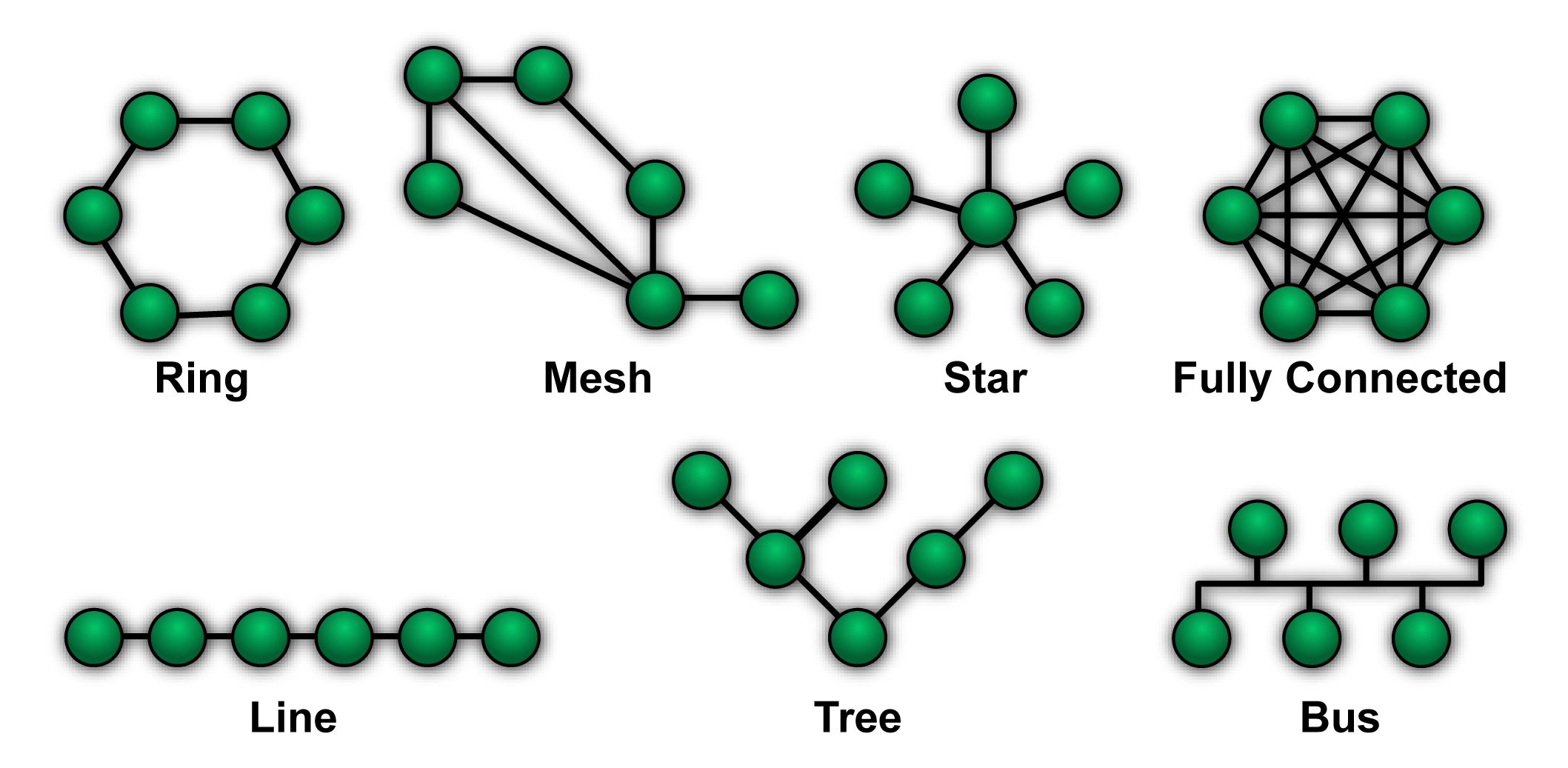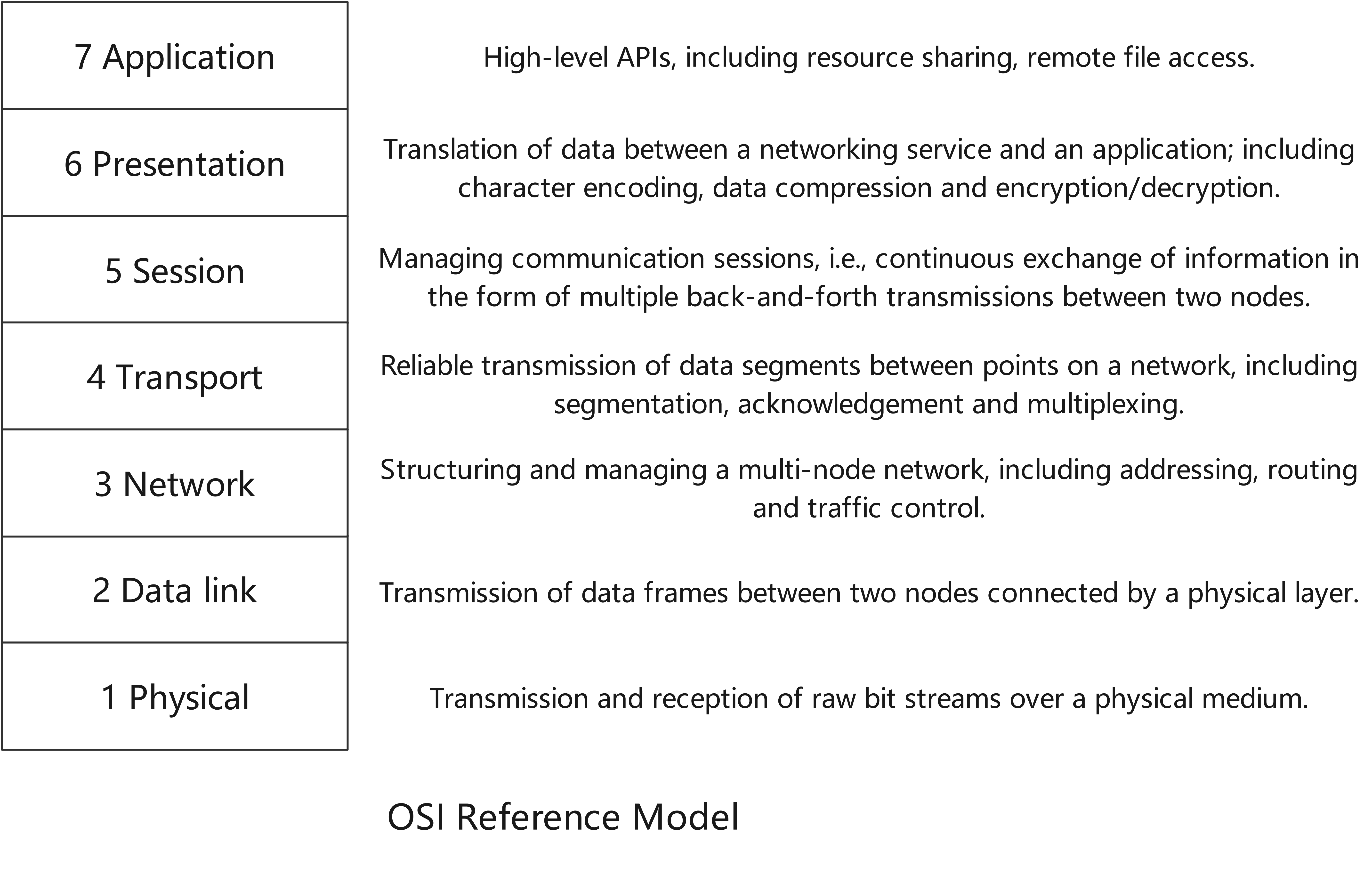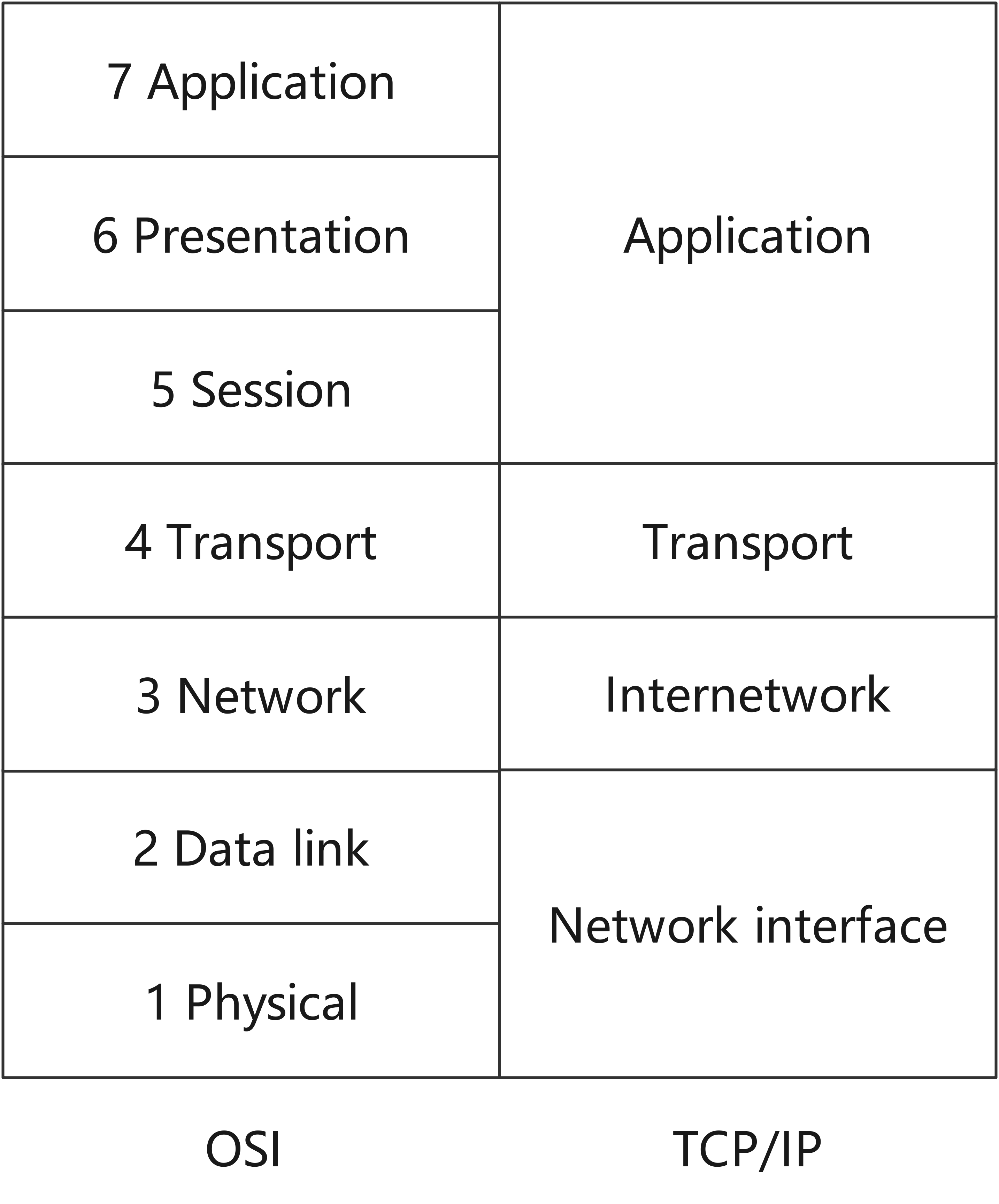Recently, I'm learning the very popular technology webgis and found there's a lot of interesting knowledge in it so I'm going to recoding my study notes in this and next few blogs.
Outline of computer network
A computer network is a set of computers sharing resources located on or provided by network nodes. The computers use stanard communication protocols over digital interconnections to communicate with each other. These interconnections are made up of telecommunication network technologies, based on physically wired, optical, and wireless radio-frequency methods that may be arranged in a variety of network topologies.
Before the advent of computer networks, the exchange of information spread through magnetic disc. The development of computer networks since the 1960s can be roughly divided into four development stages.
Remote connection stage
Before the 1960s, remote online systems were contredon a single computer. Such a network is a master-slave structure characterized by a single computer with autonomous processing capabilities. A computer and multiple terminals without autonomous processing functions form a network.
Computer interconnection stage
This stage is a multiprocessing center formed by interconnecting several computers. The main body of communication is a computer with independent processing capability, which realizes communication and resource sharing among multiple computers.
Standardization network stage
The OSI reference model (OSI seven-layer model) promulgated by ISO in 1984 created a new era of computer networks with unified network architecture and compliance with international standardized protocols. It has extensively promoted the standardization of network technology and laid a good foundation for the popularization of the network. This also marks the birth of the third generation of computer networks.
Network interconnection and the development of high-speed network system stage
In the 1990s, computer technology, communication technology and computer network technology based on interconnected computer network technology developed rapidly. The Internet is a large-scale Internet network that realizes the interconnection of multiple wide area networks and local area networks through routers. It plays an immeasurable role in promoting the development of world science, culture, economy and society.
Classification of computer networks
According to the geographical coverage of the network, it can be roughly divided into Local area network(LAN), Metropolitan area network(MAN), Wide area network(WAN) and Internet.
It can also be divided according to the network topology. The physical or geographic locations of network nodes and links generally have relatively little effect on a network, but the topology of interconnections of a network can significantly affect its throughput and reliability.
Common layouts include:
- Bus network: all nodes are connected to a common medium along this medium. This was the layout used in the original Ethernet, called 10BASE5 and 10BASE2. This is still a common topology on the data link layer, although modern physical layer variants use point-to-point links instead, forming a star or a tree.
- Star network: all nodes are connected to a special central node. This is the typical layout found in a small switched Ethernet LAN, where each client connects to a central network switch, and logically in a wireless LAN, where each wireless client associates with the central wireless access point.
- Ring network: each node is connected to its left and right neighbour node, such that all nodes are connected and that each node can reach each other node by traversing nodes left- or rightwards. Token ring networks, and the Fiber Distributed Data Interface (FDDI), made use of such a topology.
- Mesh network: each node is connected to an arbitrary number of neighbours in such a way that there is at least one traversal from any node to any other.
Tree network: nodes are arranged hierarchically. This is the natural topology for a larger Ethernet network with multiple switches and without redundant meshing.

Computer Network Protocols and Architectures
Protocol: A rule, standard, or convention established for the exchange of data in a computer network.
Architecture: The computer network adopts a layered structure, and each layer implements relatively independent functions. Each layer does not need to know how the next layer is implemented, as long as it knows what services the lower layer can provide, through what interfaces to provide services, and what services this layer needs to provide to the upper layer. The collection of layers of computer networks and their protocols is called computer network architecture.
There are two types of computer network architectures: Open System Internetwork Reference Model and TCP/IPreference model.
The Open Systems Interconnection model (OSI model) is a conceptual model that describes the universal standard of communication functions of a telecommunication system or computing system without any regard to the system's underlying internal technology and specific protocol suites. Therefore, the objective is the interoperability of all diverse communication systems containing standard communication protocols, through the encapsulation and de-encapsulation of data, for all networked communication.
The model partitions the flow of data in a communication system into seven abstraction layers, to describe networked communication from the physical implementation of transmitting bits across a communications medium to the highest-level representation of data of a distributed application. Each intermediate layer serves a class of functionality to the layer above it and is served by the layer below it. Classes of functionality are realized in all software development through all and any standardized communication protocols.

The Internet protocol suite, commonly known as TCP/IP, is the set of communications protocols used in the Internet and similar computer networks. The current foundational protocols in the suite are the Transmission Control Protocol (TCP) and the Internet Protocol (IP), as well as the User Datagram Protocol (UDP).
The Internet protocol suite provides end-to-end data communication specifying how data should be packetized, addressed, transmitted, routed, and received. This functionality is organized into four abstraction layers, which classify all related protocols according to each protocol's scope of networking. From lowest to highest, the layers are the Network interface layer, containing communication methods for data that remains within a single network segment (link); the internetwork layer, providing internetworking between independent networks; the transport layer, handling host-to-host communication; and the application layer, providing process-to-process data exchange for applications.

The two reference models can provide developers with a necessary, common concept to develop a complete framework that can be used to explain the connection of different systems. The specific functions and implementation protocols of each layer are relatively complex. Each layer is also implemented by specific network interconnection devices, such as hubs, switches, routers, gateways, etc. This blog simply lists the composition and general functions of the model. Here I recommend the book Computer Networking A Top-Down Approach to learning more.
Summary
This blog briefly introduces the concept, development and classification of computer networks and has a preliminary understanding of the protocols and architecture of computer networks. These are the keys to stepping into the world of computer networks.
Next time I will try to introduce the role and division of IP addresses in the Internet Protocol, which is one step closer to our daily network use.
17 comments
《华纳圣淘沙公司开户流程全解析》→ 官方顾问一对一指导??? 安全联系:183第三段8890第四段9465
《华纳圣淘沙开户步骤详解》→ 」专属通道快速办理??? 安全联系:183第三段8890第四段9465
《华纳圣淘沙账户注册指南》→ 扫码获取完整资料清单?「微?? 安全联系:183第三段8890第四段9465
《新手开通华纳圣淘沙公司账户指南》→ 限时免费咨询开放??? 安全联系:183第三段8890第四段9465
《华纳圣淘沙企业开户标准流程》→ 资深顾问实时解答疑问??? 安全联系:183第三段8890第四段9465
《华纳圣淘沙开户步骤全景图》→ 点击获取极速开户方案??? 安全联系:183第三段8890第四段9465
《华纳圣淘沙账户创建全流程手册》→ 预约顾问免排队服务?9?? 安全联系:183第三段8890第四段9465 《从零开通华纳圣淘沙公司账户》→ 添加客服领取开户工具包?? 安全联系:183第三段8890第四段9465
《官方授权:华纳圣淘沙开户流程》→ 认证顾问全程代办?」?? 安全联系:183第三段8890第四段9465
《华纳圣淘沙开户说明书》→立即联系获取电子版文件??? 安全联系:183第三段8890第四段9465
东方明珠客服开户联系方式【182-8836-2750—】?μ- cxs20250806
东方明珠客服电话联系方式【182-8836-2750—】?- cxs20250806】
东方明珠开户流程【182-8836-2750—】?薇- cxs20250806】
东方明珠客服怎么联系【182-8836-2750—】?薇- cxs20250806】
果博东方客服开户联系方式【182-8836-2750—】?薇- cxs20250806】
果博东方公司客服电话联系方式【182-8836-2750—】?薇- cxs20250806】
果博东方开户流程【182-8836-2750—】?薇- cxs20250806】
果博东方客服怎么联系【182-8836-2750—】?薇- cxs20250806】
果博东方客服开户联系方式【182-8836-2750—】?薇- cxs20250806】
果博东方公司客服电话联系方式【182-8836-2750—】?薇- cxs20250806】
果博东方开户流程【182-8836-2750—】?薇- cxs20250806】
果博东方客服怎么联系【182-8836-2750—】?薇- cxs20250806】
华纳东方明珠客服电话是多少?(??155--8729--1507?《?薇-STS5099】【?扣6011643?】
华纳东方明珠开户专线联系方式?(??155--8729--1507?《?薇-STS5099】【?扣6011643?】
华纳东方明珠客服电话是多少?(▲18288362750?《?微信STS5099? 】
如何联系华纳东方明珠客服?(▲18288362750?《?微信STS5099? 】
华纳东方明珠官方客服联系方式?(▲18288362750?《?微信STS5099?
华纳东方明珠客服热线?(▲18288362750?《?微信STS5099?
华纳东方明珠24小时客服电话?(▲18288362750?《?微信STS5099? 】
华纳东方明珠官方客服在线咨询?(▲18288362750?《?微信STS5099?
2025年10月新盘 做第一批吃螃蟹的人coinsrore.com
新车新盘 嘎嘎稳 嘎嘎靠谱coinsrore.com
新车首发,新的一年,只带想赚米的人coinsrore.com
新盘 上车集合 留下 我要发发 立马进裙coinsrore.com
做了几十年的项目 我总结了最好的一个盘(纯干货)coinsrore.com
新车上路,只带前10个人coinsrore.com
新盘首开 新盘首开 征召客户!!!coinsrore.com
新项目准备上线,寻找志同道合 的合作伙伴coinsrore.com
新车即将上线 真正的项目,期待你的参与coinsrore.com
新盘新项目,不再等待,现在就是最佳上车机会!coinsrore.com
新盘新盘 这个月刚上新盘 新车第一个吃螃蟹!coinsrore.com
2025年10月新盘 做第一批吃螃蟹的人coinsrore.com
新车新盘 嘎嘎稳 嘎嘎靠谱coinsrore.com
新车首发,新的一年,只带想赚米的人coinsrore.com
新盘 上车集合 留下 我要发发 立马进裙coinsrore.com
做了几十年的项目 我总结了最好的一个盘(纯干货)coinsrore.com
新车上路,只带前10个人coinsrore.com
新盘首开 新盘首开 征召客户!!!coinsrore.com
新项目准备上线,寻找志同道合的合作伙伴coinsrore.com
新车即将上线 真正的项目,期待你的参与coinsrore.com
新盘新项目,不再等待,现在就是最佳上车机会!coinsrore.com
新盘新盘 这个月刚上新盘 新车第一个吃螃蟹!coinsrore.com
新盘首开 新盘首开 征召客户!!!coinsrore.com
2025年10月新盘 做第一批吃螃蟹的人coinsrore.com
?实用类评语?
哈哈哈,写的太好了https://www.lawjida.com/
兄弟写的非常好 https://www.cscnn.com/
看的我热血沸腾啊https://www.ea55.com/
看的我热血沸腾啊https://www.237fa.com/
叼茂SEO.bfbikes.com
supper~~~